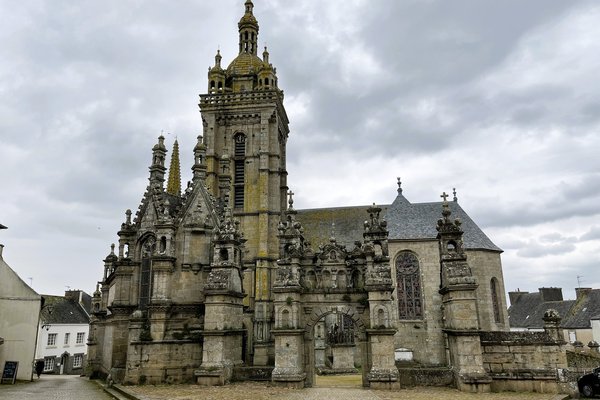France
Enclos paroissiaux du Finistère
Site Info
Official Information
- Full Name
- Enclos paroissiaux du Finistère (ID: 6755)
- Country
- France
- Status
-
On tentative list 2024
Site history
History of Enclos paroissiaux du Finistère
- 2024: Added to Tentative List
- Added to tentative list
- Type
- Cultural
- Criteria
Links
- UNESCO
- whc.unesco.org
All Links
UNESCO.org
- whc.unesco.org — whc.unesco.org
Community Information
- Community Category
- Religious structure: Christian
Travel Information
Recent Connections
News
No news.
Community Reviews
Show full reviews
Brittany was the only region in mainland France where I had not been before, but the upcoming nomination of Carnac gave me a good reason to go. Helped by a cheap and direct flight from Djerba to Nantes, I combined it into a great Tunisian-French midweek trip comprising 1 new WHS and 2 strong TWHS.
I can’t say that Brittany felt much different from Northern France in general, although the bilingual signage gives it an exotic twist.
On my second day there, I drove to the department of Finistère (one of the four Breton departments) as that is where these “Parish closes” can be found (“Enclos paroissiaux” doesn’t translate well into English). The amount of driving here should not be underestimated: Brittany is about the size of Belgium and Luxembourg combined. I was a bit hindered by the limited mileage of my rental car – some fine print that I had overlooked when booking (500km across 2 days is not enough). In the end, I created a route that would keep my additional costs within reason ánd that included at least two of the most recommended churches, ones that would be good candidates to make the final cut whenever this site gets nominated.
I made a first stop at a minor one though, the Saint-Pierre Church in Pleyber-Christ. The parish closes were created according to a strict model, and an example such as this lets you familiarize yourself with the parts (surrounding wall, arched …
Keep reading 0 comments
The parish enclosures of Finistère were added very recently to the French indicative list, and this nomination file should be put forward soon by France (perhaps 2029?). It was entrusted to a former French Minister of Culture, residing in Brittany, who contributed to the successful inscription of the city of Nice in 2021.One might wonder why France chose a bid focused once again on Christian architecture. In fact, this choice is more judicious than it seems.
First, these parish churches are very original. Modest in size but very decorated, they are made up of several elements: a decorated monumental porch, a surrounding wall, with a monumental entrance and an "échalier" (to prevent animals from accessing this sacred space), a sculpted calvary, and an ossuary.
These buildings provide a striking testimony of the Breton culture of death. To see how fascinated the Bretons were by this, I recommend the collection of stories of "La légende de la mort" by Anatole Le Braz: the stories about "Ankou" (personification of Death) are among the most fascinating.
Finally, these churches were not financed by the local nobility, but by associations of peasants enriched by the cultivation of flax in the 16th and 17th centuries (used for boat sails). At that time, Brittany was one of the richest regions in Europe, and Breton merchants were present in all the ports of Europe. Thanks to this and the invention of printing, this part of Brittany was influenced by architectural styles from France, Italy …
Keep reading 0 comments
